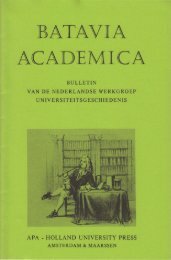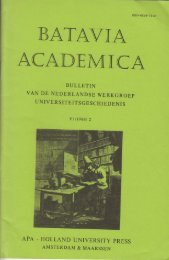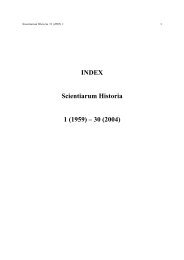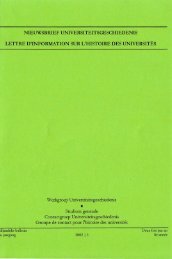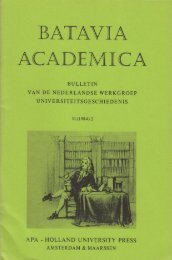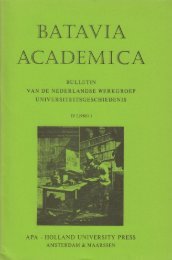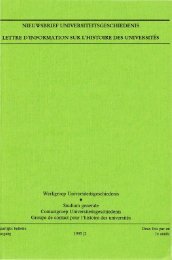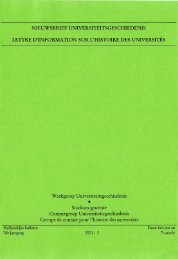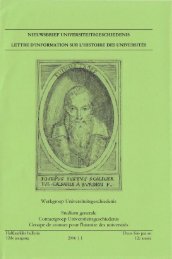the ocular harpsichord of louis-bertrand castel - Gewina
the ocular harpsichord of louis-bertrand castel - Gewina
the ocular harpsichord of louis-bertrand castel - Gewina
You also want an ePaper? Increase the reach of your titles
YUMPU automatically turns print PDFs into web optimized ePapers that Google loves.
Castel's <strong>ocular</strong> <strong>harpsichord</strong> 53<br />
remaining hidden behind a je ne sais quoi. In his article "Beau" in <strong>the</strong> Encyclopedic<br />
Diderot wrote:<br />
If, thus, nothing more enters in <strong>the</strong> concept <strong>of</strong> <strong>the</strong> beautiful ... than <strong>the</strong> notions <strong>of</strong> order,<br />
rapports, proportion, arrangement, symmetry, agreement, and disagreement, <strong>the</strong>n, since <strong>the</strong>se<br />
notions do not stem from any o<strong>the</strong>r source than do <strong>the</strong> notions <strong>of</strong> existence, number, length,<br />
size, depth, and an infinity <strong>of</strong> o<strong>the</strong>rs that are not contested, one can, it seems to me, use <strong>the</strong><br />
first set <strong>of</strong> notions in defining <strong>the</strong> beautiful without being accused <strong>of</strong> substituting one term for<br />
ano<strong>the</strong>r and turning in a vicious circle.'"''<br />
This would not have sounded completely alien to Ca.stel, who had started<br />
defending his colour music on <strong>the</strong> supposed fact that all pleasure is derived from<br />
harmonic proportion, and who in his later "logique du gout" (or even "sisteme<br />
physico-moral du gout") had called music "a simple agreement", be it one<br />
appreciated by <strong>the</strong> highest level <strong>of</strong> <strong>the</strong> mind, making it a pleasure <strong>of</strong> <strong>the</strong><br />
understanding, <strong>the</strong> only pleasure humans do not share with animals.'"'<br />
It is, indeed, very interesting to examine <strong>the</strong> changing grounds for <strong>the</strong><br />
appreciation <strong>of</strong> <strong>the</strong> idea <strong>of</strong> colour music as, in <strong>the</strong> course <strong>of</strong> <strong>the</strong> eighteenth<br />
century, <strong>the</strong> <strong>the</strong>ories <strong>of</strong> aes<strong>the</strong>tics changed. The dominating view in <strong>the</strong> first<br />
decades <strong>of</strong> <strong>the</strong> eighteenth century was <strong>the</strong> ancient idea that all art should imitate<br />
nature; it was <strong>the</strong> "principle" to which <strong>the</strong> Batteux reduced art in 1746 in Les<br />
beaux arts redidts a un meme principe. For a long time it was held that <strong>the</strong><br />
main change during <strong>the</strong> later eighteenth century and into <strong>the</strong> Romantic period<br />
was a replacement <strong>of</strong> imitation as <strong>the</strong> main criterion by expression. This was<br />
argued in 1958 by Abrams in his 77ie mirror and <strong>the</strong> lamp: during <strong>the</strong> greater<br />
part <strong>of</strong> <strong>the</strong> eighteenth century art was supposed to be a mirror which reflected<br />
nature to <strong>the</strong> audience, whereas in <strong>the</strong> Romantic conception art would be a<br />
lamp out <strong>of</strong> which streamed <strong>the</strong> light <strong>of</strong> <strong>the</strong> artist illuminating his audience.<br />
This view has recently been criticized in two books by Ncubauer and by<br />
Barry.'°* Ncubauer in particular shows how <strong>the</strong> idea <strong>of</strong> expression as a main<br />
characteristic <strong>of</strong> art was already defended by many people during <strong>the</strong> larger part<br />
<strong>of</strong> <strong>the</strong> eighteenth century, and both argue that <strong>the</strong> most important change in<br />
aes<strong>the</strong>tics at <strong>the</strong> end <strong>of</strong> <strong>the</strong> century was not a change from imitation to expression<br />
but from a representational to a non-representational conception <strong>of</strong> art.<br />
Cited in Diderot, Oemres es<strong>the</strong>iiqucs, p. 417: "S'il n'enlre done dans la notion de beau ...<br />
que les notions d'ordre, de rapports, dc proportion, d'arrangcment, de symctrie, de convenance, de<br />
disconvenance; ces notions ne decoulant pas d'une autre source que celles d'exislence, de nombre,<br />
de longueur, largeur, pr<strong>of</strong>ondeur, el une infinites sur lesquelles on ne contesle point, on peut, ce<br />
me semble, employer les premieres dans une definition du beau, sans etre accuse de substituer<br />
un lerme a la place d'un autre, et de tourner dans un ccrclc vicieux."<br />
Memoires de Trevoux. November 1735, pp. 2342-2359.<br />
Ncubauer, Emancipation; Barry, Language.



